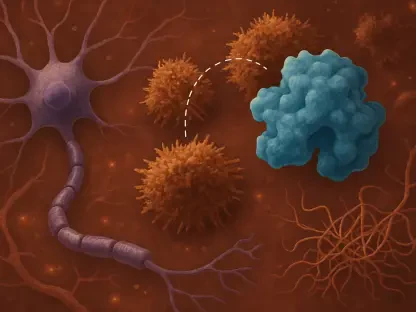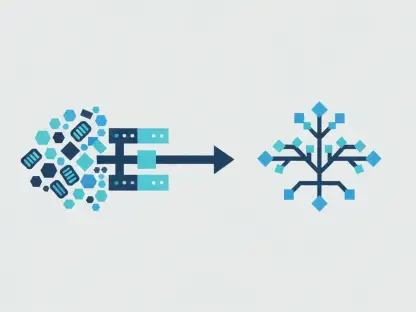In recent developments, a collaborative research team led by the University of Arizona College of Medicine – Tucson has discovered groundbreaking potential for an FDA-approved osteoporosis drug in the treatment of a rare genetic heart disease. The heart condition in question is dilated cardiomyopathy (DCM), a disorder characterized by the weakening of the heart muscles, which often leads to severe complications as the heart’s ability to efficiently pump blood diminishes. DCM is most prevalent among children and adults under the age of 50, eliciting a societal impact that necessitates effective treatment methods. This discovery opens a new avenue of hope for patients and families affected by this debilitating condition.
The Genetic Link and Challenges
DCM’s underlying causes are complex, with a significant number of cases linked to genetic mutations. Approximately 30% to 40% of DCM cases are believed to result from genetic abnormalities, making it a considerable genetic disorder. Despite the identified link between genetics and DCM, the pharmaceutical industry’s pursuit of mutation-specific therapies remains limited. This is primarily attributed to the rarity and diversity of the genetic mutations involved, making it economically nonviable for drug companies to invest in developing tailored therapies for a small subset of patients. These economic and scientific barriers have left a significant gap in effective treatments for those suffering from DCM.
Recognizing these challenges, Hesham Sadek, MD, PhD, who serves as director of the Sarver Heart Center and head of the Division of Cardiology at the College of Medicine – Tucson, pursued an alternative strategy known as drug repurposing. By leveraging existing FDA-approved drugs, Sadek intended to address rare mutations without the prolonged and costly path of developing new drugs. This innovative approach is anchored in the notion of using medications initially approved for other conditions to treat rare genetic disorders. Drug repurposing offers a faster, more cost-effective route to therapeutics, potentially bringing life-saving treatments to patients much more swiftly than traditional drug development pathways.
Breakthrough with Risedronate
Central to their research was the investigation of the K210del mutation, the first DCM-associated mutation identified. By constructing the first-ever 3D model of the K210del mutation and comparing it to a healthy protein counterpart, the team sought to understand how the mutation disrupts the heart’s motor functions. Their analysis revealed that the defective protein resulting from the K210del mutation impaired the heart’s ability to pump effectively. This breakthrough provided critical insights into how genetic mutations can directly influence heart function, paving the way for targeted intervention.
To identify potential therapeutic agents, Sadek’s team utilized artificial intelligence and supercomputing technology to screen approximately 2,000 FDA-approved drugs. Their analysis revealed a surprising pattern: the most promising candidates for correcting the mutation were drugs commonly prescribed for osteoporosis. After rigorous testing in cell cultures and animal models, one drug, risedronate, emerged as a viable candidate. Risedronate successfully rectified the structural deformity of the mutated protein and restored normal heart function in animal models, demonstrating significant potential as a treatment for DCM caused by the K210del mutation.
Implications and Future Directions
The implications of these findings are profound. For the first time, there exists an FDA-approved drug capable of correcting a genetic mutation associated with heart disease and normalizing heart function in animal models. This significant milestone opens the potential for addressing similar mutations in other rare genetic heart conditions. The success of risedronate suggests that other existing medications might also hold unrecognized potential to treat genetic disorders, unveiling a new horizon of possibilities in medical treatment and research.
In collaboration with the National Cardiovascular Research Center in Spain, Sadek’s team plans to evaluate the efficacy of risedronate in two families harboring the K210del mutation. Parallel efforts are underway to initiate a clinical trial at the Sarver Heart Center. This cross-institutional cooperation underscores the collective pursuit of innovative therapeutic solutions for rare genetic disorders that have historically been neglected due to their limited prevalence. By combining resources and expertise, these collaborations enhance the potential for significant breakthroughs, ultimately improving patient outcomes.
A New Frontier in Genetic Heart Disease Treatment
A team of researchers from the University of Arizona College of Medicine – Tucson has made a significant discovery regarding an FDA-approved drug for osteoporosis, showing its potential in treating a rare genetic heart disease. The disease, dilated cardiomyopathy (DCM), is marked by the weakening of heart muscles, which often leads to serious complications due to the heart’s reduced ability to pump blood efficiently. DCM is most commonly found in children and adults younger than 50. This discovery is groundbreaking, providing new hope for patients and families dealing with this debilitating condition. The societal impact of DCM highlights the need for effective treatments, and this new use for the osteoporosis drug could be a critical development. The potential for this medication to improve outcomes for DCM patients makes this research a beacon of hope, signifying advancements not only in medical treatment but also in the quality of life for those affected by this serious heart disease.









